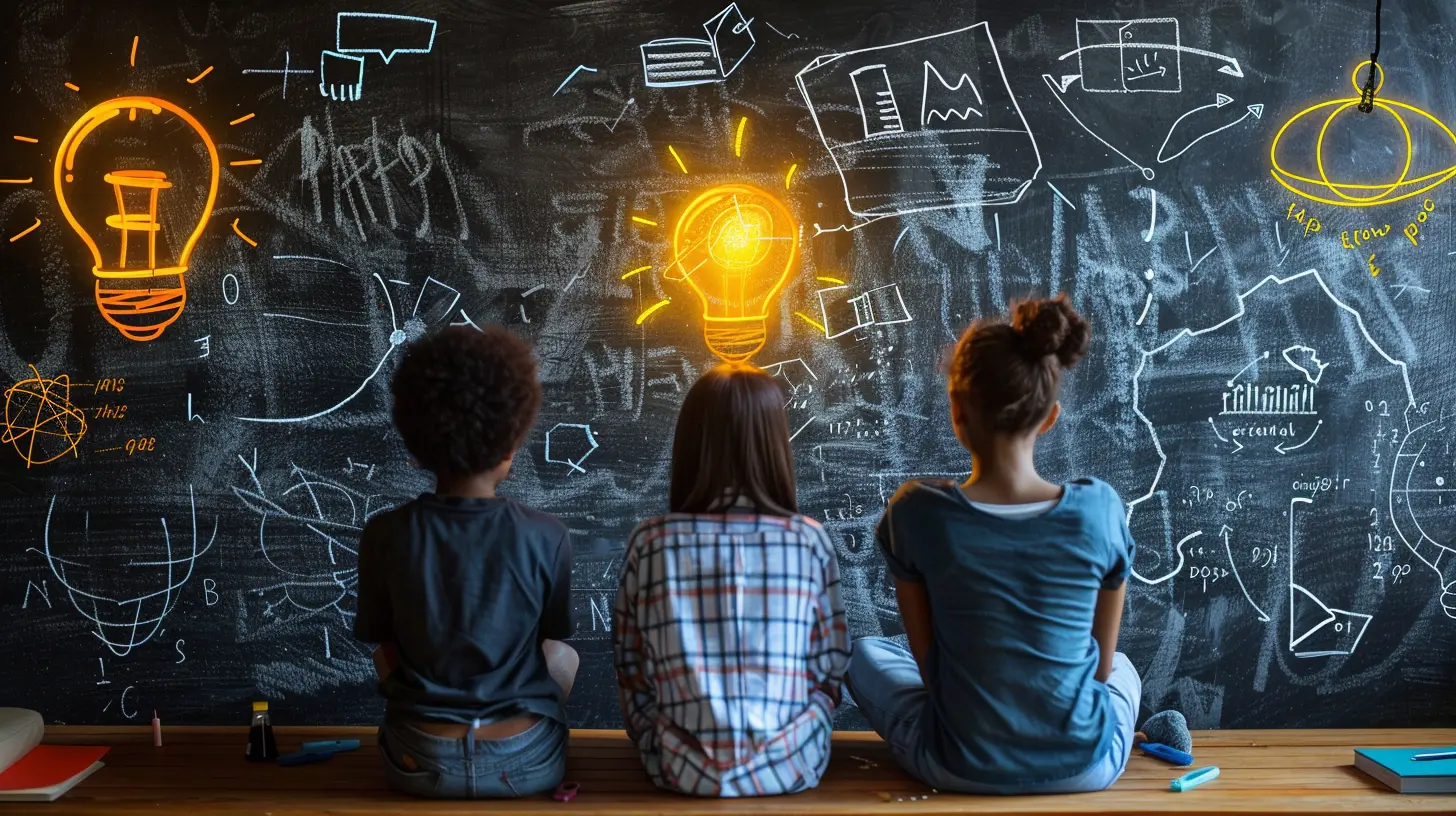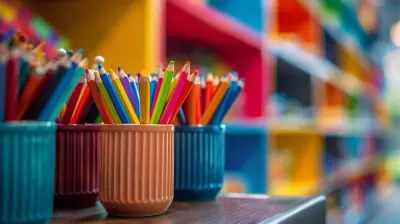Using Real-World Examples to Increase Classroom Relevance and Motivation
7 August 2025
Education is often criticized for being too abstract, theoretical, or out of touch with real life. Many students find themselves wondering, "Why do I need to learn this?" or "How will this help me in the real world?" As educators, one of the best ways to engage our students and boost motivation is by integrating real-world examples into lessons. When students see the practical applications of what they’re learning, they become more invested in the process.
So, how can teachers make their lessons more relevant? And how does real-world application impact student motivation? Let’s dive in.

Why Real-World Examples Matter in Education
Imagine you're taking a math class, and your teacher is explaining algebraic equations. Now, think about two different scenarios:1. Your teacher simply writes an equation on the board and solves it step by step.
2. Your teacher presents a real-life problem—like calculating the cost of a road trip, determining interest on a loan, or predicting future savings. Using algebra, they show how these equations help solve practical issues.
Which lesson do you think would be more engaging? Most students would pick the second option because it connects the abstract concept to situations they care about.
Bringing real-world problems into the classroom:
- Makes learning meaningful – Students see the importance of what they’re studying.
- Boosts engagement – They stay interested because the lesson feels relevant.
- Improves retention – When students attach knowledge to personal experiences or familiar concepts, they remember it better.
- Builds critical thinking skills – Applying concepts to real-world scenarios forces students to think beyond memorization.

The Science Behind Relevance and Motivation
Psychological studies show that students are more motivated when they understand the value of what they are learning. According to Self-Determination Theory (SDT), motivation comes from three core needs:1. Autonomy – Feeling in control of learning.
2. Competence – Feeling capable of mastering new skills.
3. Relatedness – Feeling connected to people or concepts.
When teachers connect lessons to students' lives, they tap into all three factors. Students feel more in control because they can see how the knowledge applies to their goals. They feel competent because they're solving real, tangible problems. And they feel a sense of relatedness because the lesson connects to their world.

How to Incorporate Real-World Examples in the Classroom
It’s one thing to talk about using real-world examples, but how can teachers actually make this happen? Below are practical methods to bring lessons to life.1. Use Current Events and News Stories
Instead of relying solely on textbooks, weave current events into your lessons. If you're teaching economics, discuss inflation using recent price trends. If it's a government class, analyze a recent election. Students are more likely to engage when they recognize the topics being discussed.💡 Example: In a science class, rather than just teaching about climate change in theory, analyze actual data from NASA or discuss ongoing wildfires and their impact.
2. Incorporate Hands-On Projects
Students thrive when they can apply knowledge directly. Project-based learning (PBL) gets them involved in problem-solving, research, and creativity.💡 Example: Instead of just teaching geometry from a textbook, have students design blueprints for a tiny house, using real measurements and budgets.
3. Bring Guest Speakers from Various Professions
Invite professionals to talk to your students. Hearing from someone in the field makes concepts come alive in a way that textbooks can't.💡 Example: A history teacher could bring in a museum curator to discuss historical artifacts. A biology teacher might invite a doctor or environmental scientist to explain real-world applications of the subject.
4. Link Lessons to Future Careers
Students are often motivated when they see how a subject connects to job opportunities in the real world. Make it a habit to explain how people use different subjects in their careers.💡 Example: A writing teacher could show how strong writing skills are crucial in marketing, journalism, and law. A math teacher might highlight how engineers, architects, and business analysts use math daily.
5. Use Technology and Simulations
Today’s students are digital natives, so why not use technology to your advantage? Many apps and simulations bring real-world scenarios into the classroom, helping students understand abstract concepts through interaction.💡 Example: In a physics class, use virtual simulations to demonstrate Newton’s laws in action. In a geography class, take a virtual tour of the Grand Canyon or Mount Everest.
6. Assign Real-World Problem-Solving Tasks
Encourage students to find real-world problems and apply classroom knowledge to solve them. This fosters creativity, critical thinking, and problem-solving skills.💡 Example: A business class could have students start a small business using a limited budget. They would have to apply math, finance, marketing, and communication skills.
7. Encourage Debates on Social Issues
Debates and discussions involving real-life issues make learning dynamic and relevant. They also help students develop communication and problem-solving skills.💡 Example: An English class discussing persuasive writing could structure a debate on current social issues, using rhetorical strategies to form arguments.

Examples of Real-World Applications in Different Subjects
To make this concept even clearer, here are some subject-specific examples of using real-world applications in the classroom:| Subject | Real-World Example |
|-------------|----------------------|
| Math | Teaching probability through sports statistics or calculating interest rates using real-world financial data. |
| Science | Conducting hands-on experiments related to food chemistry, medicine, or environmental issues. |
| History | Connecting past events to modern social movements or analyzing political systems over time. |
| English | Analyzing persuasive writing through marketing campaigns, political speeches, or social media trends. |
| Geography | Using Google Earth to study physical landscapes and human impact on the environment. |
| Economics | Comparing global economies based on real market data and trends. |
The Long-Term Benefits of Real-World Learning
When students perceive their education as meaningful, their motivation extends far beyond the classroom. They become lifelong learners, critical thinkers, and problem solvers. Additionally, when education is tied to real-life applications, students are more prepared to enter the workforce with the skills they need.By making lessons relevant, teachers are not only helping students understand concepts better but also inspiring them to remain curious, engaged, and motivated beyond their school years.
Final Thoughts
The best educators are those who bridge the gap between theory and practice. If you’re a teacher, making a conscious effort to tie your lessons to the real world can transform your classroom. It’s not just about making learning fun—it’s about making it meaningful.So, next time you prepare a lesson, ask yourself: How can I make this more relevant to my students' lives? That simple question could be the key to unlocking your students' full potential.
all images in this post were generated using AI tools
Category:
Student MotivationAuthor:

Olivia Chapman
Discussion
rate this article
1 comments
Nym Sharpe
Real-world examples enhance engagement and contextual understanding effectively.
August 16, 2025 at 12:43 PM

Olivia Chapman
Thank you! I completely agree—real-world examples not only make learning more relatable but also boost student motivation by showing the practical applications of their studies.


